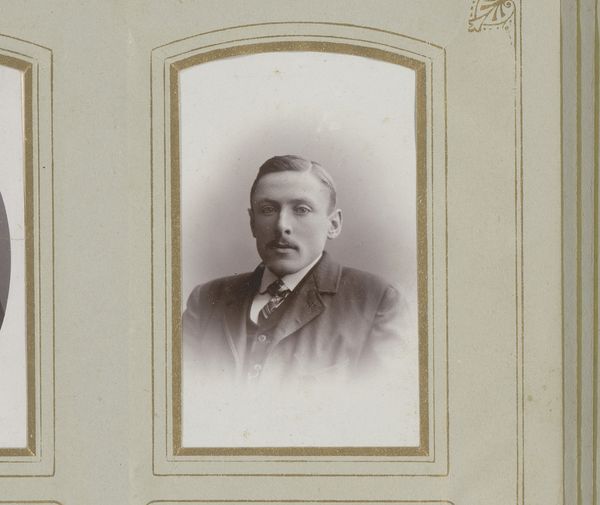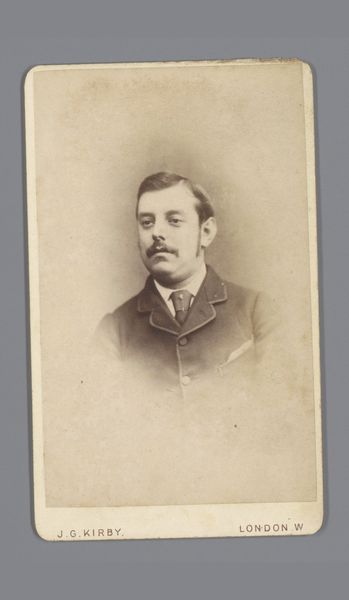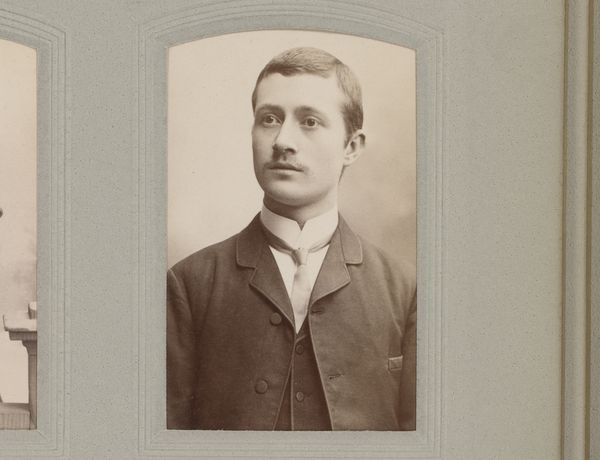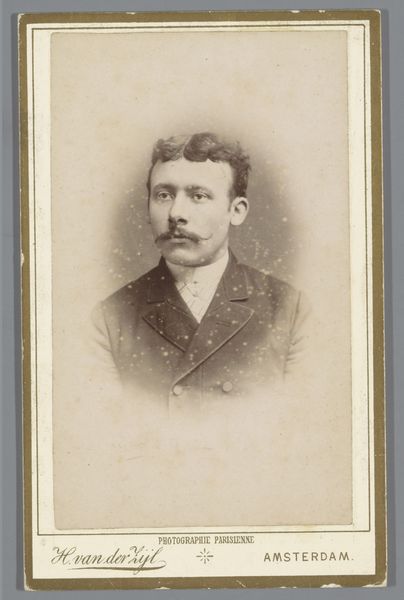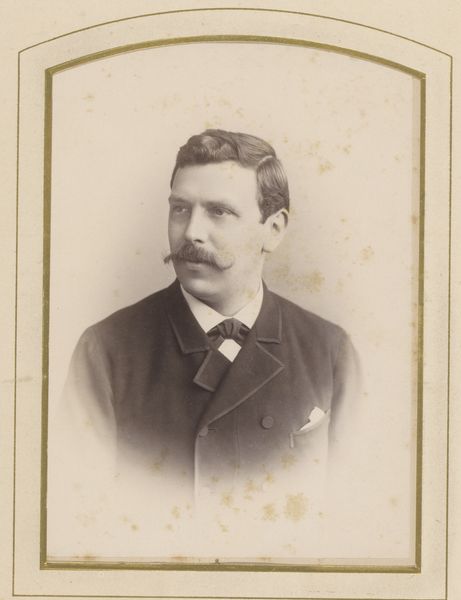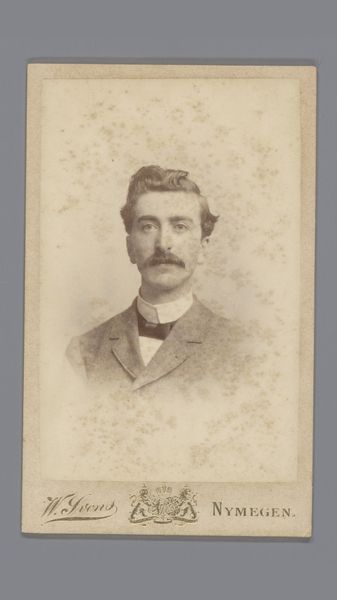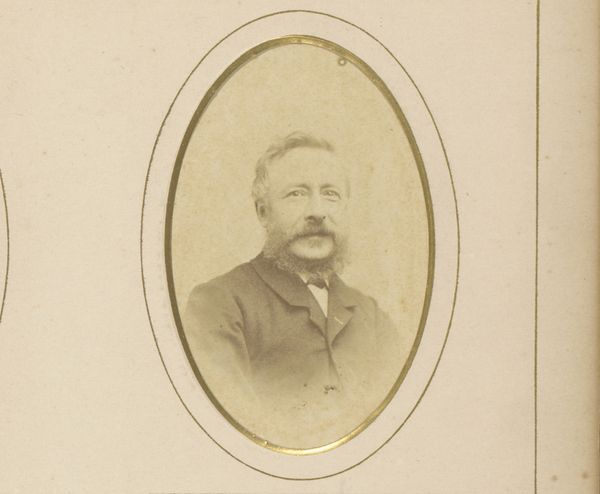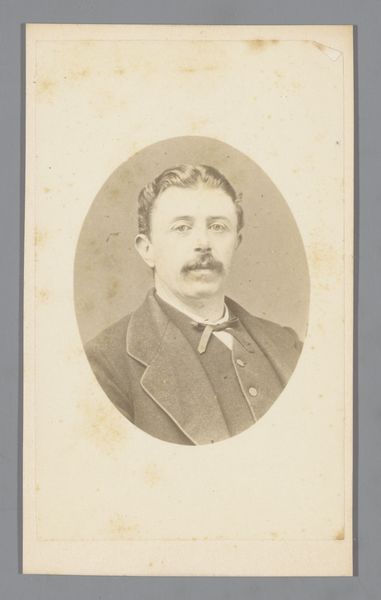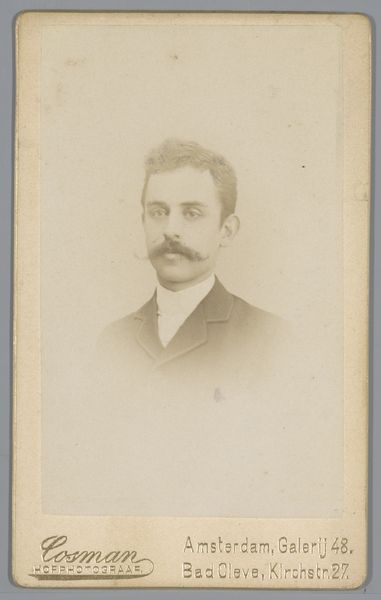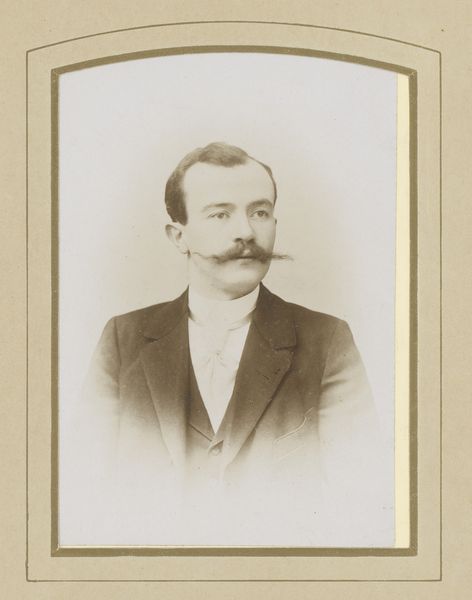
daguerreotype, photography
#
portrait
#
daguerreotype
#
photography
#
realism
Dimensions: height 139 mm, width 98 mm
Copyright: Rijks Museum: Open Domain
Editor: This daguerreotype, “Portret van een man met snor,” which translates to "Portrait of a Man with a Moustache," was created sometime between 1860 and 1900 by E. Visser von Weeren. It's fascinating how the subject’s gaze seems to follow you, but I'm curious, what strikes you most about it? Curator: It's important to remember the context of daguerreotypes. These were luxury items. Who was commissioning these portraits, and how did this influence the presentation of the sitter? This image reinforces a sense of middle-class respectability. Look at his posture and restrained gaze – this reflects how photographic portraits participated in constructing identity and social status. Does the neutral backdrop further that effect? Editor: Definitely. The plain backdrop doesn’t distract from the person. It seems so…staged. Was that always the aim? Curator: Not always "staged," but photography provided new avenues for social mobility and identity construction. In this period, you saw photo studios pop up everywhere that catered to this need, providing affordable access to portraiture for the bourgeoisie. The 'realism' that is referenced is a constructed realism. In contrast to more opulent painted portraits, these offered more widely accessible, relatively affordable likenesses. Editor: So the “realism” served more of a social function, reflecting a specific ideal that was becoming popular? Curator: Precisely. And that neatly framed presentation—it was as much about display, signaling a social identity, as it was about capturing a likeness. How do you think a digital photograph of someone differs? Editor: Hmm… it's interesting to think about how different the intention is behind images today versus then. Thank you, that gives me a lot to think about regarding social contexts shaping art. Curator: My pleasure!
Comments
No comments
Be the first to comment and join the conversation on the ultimate creative platform.

